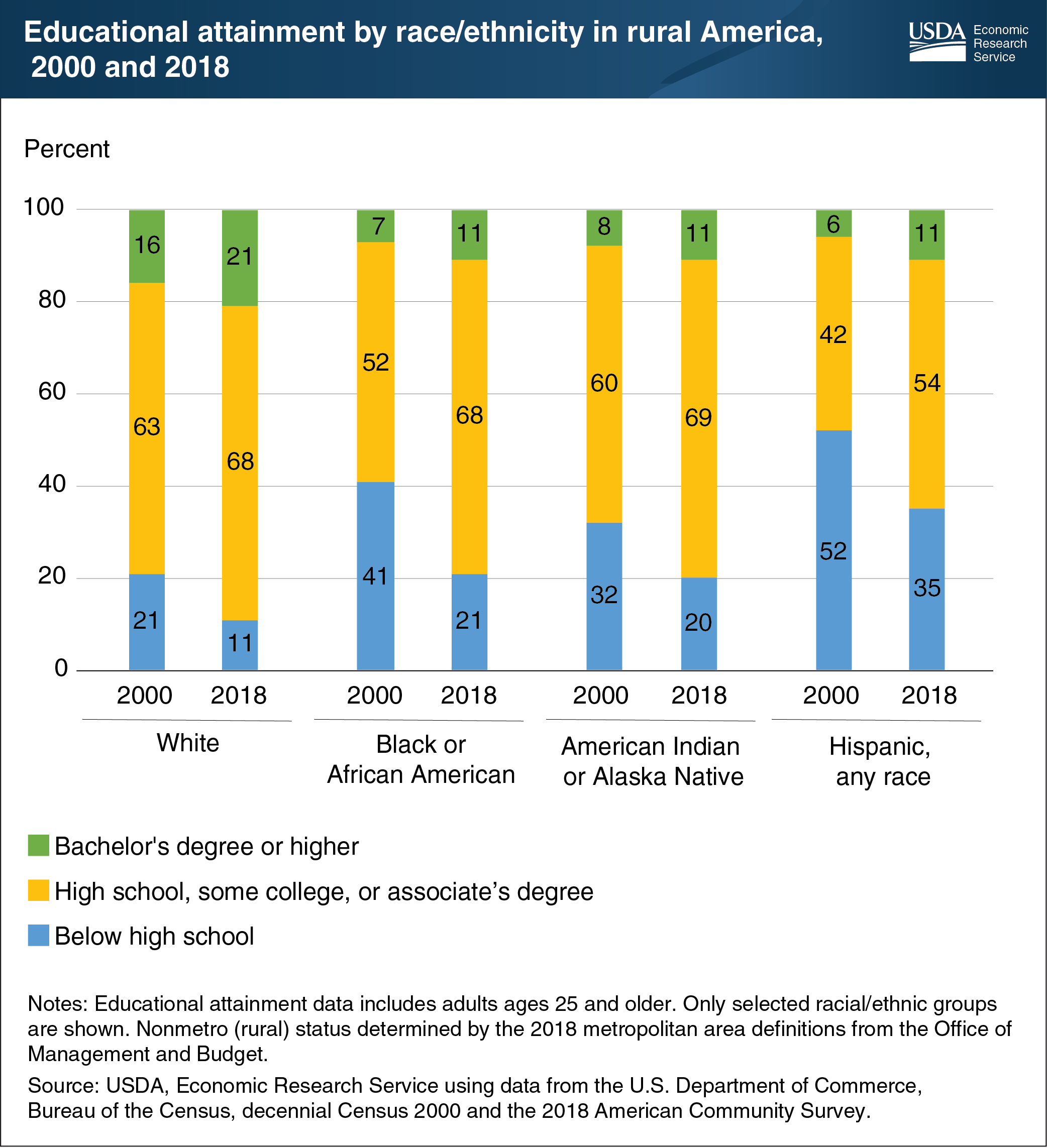Disparities in educational attainment by race and ethnicity persist in rural America
- by Tracey Farrigan
- 12/7/2020

Higher educational attainment is associated with higher median earnings, higher employment rates, and greater workforce opportunity. Among all rural residents who are 25 years old or older, the percentage of those who had completed a bachelor’s degree or higher rose from 15 percent in 2000 to 20 percent in 2018. In addition, the share of the rural population 25 or older without a high school degree or equivalent dropped from 24 percent in 2000 to 13 percent in 2018. Even so, ethnic and racial disparities persist in education. Rural Hispanics continued to have the highest share (35 percent) without a high school degree, despite significant gains in high school and higher educational attainment rates between 2000 and 2018. Over the same period, Blacks or African Americans had the largest decrease (20 percentage points) of rural individuals without a high school degree. This change eliminated the gap between the shares of Blacks or African Americans and Whites who had graduated from high school but had not completed a bachelor’s degree. Nevertheless, the share of rural Blacks or African Americans without a high school degree remained nearly double that of Whites in 2018. This chart appears in the November 2020 Amber Waves finding, “Racial and Ethnic Disparities in Educational Attainment Persist in Rural America.”

